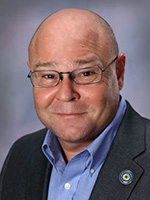Over the years, the eJournal of Public Affairs has worked closely with a variety of scholars to bring our readers themed issues guided by guest editors who specialize in the subjects related to that scholarship. This issue, however, is from open submissions – work that comes to us unaffiliated with a special issue. We look forward to bringing you open submission issues, because while the work is produced independent of an announced topic, the mission of the eJournal attracts scholarship and commentary yielding connections and common purpose. This issue is a valuable example of the distinctly public-spirited thread that runs through so much of the work we are proud to publish.

In “Bridging the Gap Between Researchers and Wider Audiences: Navigating a Community Literacy Collaboration in Real-Time,” Terry Atkinson, Kimberly Anderson, and Elizabeth Swaggerty explore the enduring conundrum of a scholarship of engagement. Partnerships are often formed between scholars and the community, typically as part of the university’s explicit mission, but where should the research about that collaborative work be published? Academic journals, where the audience is narrow and the shape of the published data is tailored to disciplinary standards designed to meet institutional expressions of achievement for tenure and promotion? Or less disciplinary-centered venues where the research is more likely to be encountered and applicably understood by non-academic partners? As the title suggests, this article focuses on what it will take to close that gap between academic and non-academic audiences and their needs. The authors argue that the convergence path is through greater institutional recognition of a wider array of publishing alternatives. However, this requires the university to see such research as a communication challenge with more direct public connection. At the same time, scholars need to be willing to present their work in language and frameworks that are more accessible to audiences beyond the academy.
Our second article examines the effective nexus of federal education policy, innovative programming, and research. In “The Role of Positive Youth Development, Education Policy, and Cultural Relevancy in Schools,” by Rolanda L. Ward, Tanyetta A. Carter, and Nazia Saddiq, their central argument is seeing underserved youth, particularly youth of color, more as a resource than a client for education. As the authors observe in historical narrative, the failure of education policy in the U.S. has not been the result of a disengaged federal commitment. The focused energy of Lyndon Johnson’s Great Society generated funding and social purpose; the administration of George W. Bush sought to reinvigorate commitment to students through outcome assessment on individual school success – the “compassionate conservatism” of accountability. While these efforts had presidential level ownership, perhaps the approaches were misaligned with the cultural realities and the underlying strength of school as a contextual environment for instilling the building blocks of student success in traditionally underserved communities. The authors argue that the education policy of Barack Obama’s administration established an opportunity for Positive Youth Development (PYD) initiatives to emerge with defining characteristics aligned according to more holistic – and realistic – aspirations and realities. With a focus on structured activities and experiences, PYD reframes the grand federal educational policy of the past toward the possibilities of community-based partnerships and programs, reforming school-based commitments with the inclusion of student voice and involvement. Because this most recent federal approach only commenced in 2017, the authors provide specific recommendation for the research that can demonstrate the difference such efforts can make.
We continue to excavate the theme of working with youth in Tamara J. Lynn’s “Developing Civically Engaged Citizens in an Introductory Criminal Justice Course.” Her article offers insight to the complexities of combining civic purpose and research introduction through experiential pedagogy. As Lynn explains, criminology is the most theoretical of all the introductory courses orienting entry-level students in criminal justice to a field that is highly applied in its professional training. At the core of the author’s presentation is the driving question of how to illustrate to students that research in the theoretical end of the field can lead to direct crime-reduction in practice. Indeed, there are few professions with such field-level potential to transform social reality toward the specific end of justice and with notably measurable outcomes. By engaging her students in a research project to explore the possibilities of establishing a local “teen court” to adjudicate juvenile crime, Lynn demonstrates that the results can allow students to assess the social utility of a targeted program. Ultimately, students can see that their career paths in the criminal justice system can go beyond law enforcement to a new perspective on their roles as change agents. Of additional value to the instructor, Lynn breaks down the preparatory steps necessary for success in the development and delivery of any experiential course involving community partners toward similar learning outcomes.
“A New-Old Way to Explore Civic Engagement: Learning from the Past,” by Peter A. Nagler and Harry Basehart reminds us that while the emphasis on civic engagement is powerfully current in the mission and programming of higher education, the importance of an engaged citizenry is an old idea. This journal has often brought readers theoretical insights for civic engagement, and this article grounds such efforts in some of the earliest political theorizing around citizenship. Some might disagree with the argument made by Nagler and Basehart, particularly on the founders’ claim of necessity for an actively engaged and virtuous citizenry. Why then did Hamilton and Madison seek to foster the development of a large republic rather than smaller governmental spheres of influence more conducive to direct democracy? If the system is meant to run according to the civic virtue of the citizenry, why the emphasis on institutional balance of power to check ambition? What of the dangers of factions, which bloom when citizens take an active interest in public life? Theorists of American democratic life have advanced a range of interpretations on such questions. This article adds a twist: What would ancient and modern philosophers advise for the 21st century classroom? More specifically, in an era driven by the demands of assessment, the argument takes us back to what the founders of the U.S. might identify as learning objectives for civic engagement in the system of governance they launched. Nagler and Basehart set out individual attributes of the “good citizen” involving the cultivation of purposeful and even sacrificial impulses to improve society through elevation of the public good over private interest, including through dissent. Perhaps most important, they argue that the skills of engagement must be classroom cultivated through the reflective enterprise of developing a vision for what the society should be striving to achieve and defend. Skills are developed and practiced through the valued emphasis of healthy and vibrant political talk through issues. In that spirit, we hope that consideration of this argument prompts some of our readers to express their own perspective, either in responsive comments or by submission of another interpretation of what the outcome of higher education efforts around civic values, skills, and efficacy should be.
The future is a world in which children must live, so we need to let them build it with us. That insight is at the core of Placemaking with Children and Youth: Participatory Strategies for Planning Sustainable Communities, by Victoria Derr, Louise Chawla, and Mara Mintzer. As Brandy C. Judkins observes in her review, the literature of participatory and deliberative democracy overlap in the work their book captures, yet the authors have also made a solid contribution to understanding how community partnerships and innovative engagement models can explicitly rely upon the design vision of children. The underlying theory of these efforts finds validation in the natural creativity and optimism of youth. Derr, Chawla, and Mintzer provide the activities and exercises that can draw out and capture this anything-is-possible-perspective. The authors also have the stories of engaging the too-often voiceless demographic that will be affected the most by the planning choices we make today – youth in Canada, South Africa, Australia, Mexico, The Netherlands, as well as the U.S. and other locations represented in this book. In Brandy C. Judkins, we are pleased to have a reviewer who is a trained academic in education with crossover insights from her role as a teacher in the public school system of Cobb County, Georgia.
Next, we want to draw your attention to an essay in Tell Your Story, the features section of the eJournal where we are proud to offer work grounded in a more narrative presentation. The current issue includes an essay by Joseph Zompetti, “Debate, Critical Thinking, and Civic Education: Why No One Should Give Up on Burma.” In 2009, Zompetti’s expertise in communications, especially the art and technique of argumentation, took him to Burma, also known as Myanmar. At that time, his work was with non-governmental organizations involved in the pro-democracy movement; under challenging conditions, the author led workshops to train activists with communication skills to augment their passionate commitment to the country’s future. His essay contextualizes the experience more broadly in retrospect here, with great value for any professional who wants to use applied expertise to help others find social and political voice. Although the essay provides important historic context to help us understand the realities of the current troubled Burmese transition to democracy, Zompetti is also bringing us an argument about field work in capacity building, where the lessons of a specific time and place can transfer to all those who work to improve social conditions through civic training.
Finally, also included in the Tell Your Story section, is “Give 5 – Where Public Affairs Meets Civic Matchmaking,” a video featuring former Springfield, Missouri City Manager Greg Burris, who describes a new program to stimulate volunteerism. The rapidly growing number of Baby Boomers reaching retirement age identifies an experienced and talented pool of potential volunteers if the barrier for participation is low enough and the match in the community is well-considered. Burris reports that the results so far have been extremely satisfying for both volunteers and the community organizations that benefit from this new way of approaching a tried-and-true form of civic engagement.
This offering of open submissions brings what the best of our themed issues also exhibit: traditional and current theory, applied efforts with analyzed outcomes, the academy in partnership with the community, and the teaching and practice of public life. We hope our readers find ideas and inspiration for their own work in the world.
Author
 Darrell A. Hamlin is an Associate Professor of Political Science at Fort Hays State University. He holds an M.A. and Ph.D. in Political Science from Rutgers University, and a B.A. in American Studies from Baylor University. He has taught fulltime on the faculties of Rutgers University, Spring Hill College, and Fort Hays State University.
Darrell A. Hamlin is an Associate Professor of Political Science at Fort Hays State University. He holds an M.A. and Ph.D. in Political Science from Rutgers University, and a B.A. in American Studies from Baylor University. He has taught fulltime on the faculties of Rutgers University, Spring Hill College, and Fort Hays State University.
A Senior Fellow at the Center for Civic Leadership at Fort Hays State University, Hamlin is also the leadership coach for students in FHSU’s Honors College. His scholarship, teaching, and service have received awards, and he has been the recipient of grants for research and for educational development.
As a writer, educator, consultant and coach, he focuses on civic renewal, leadership, and expanded narratives of public life.

